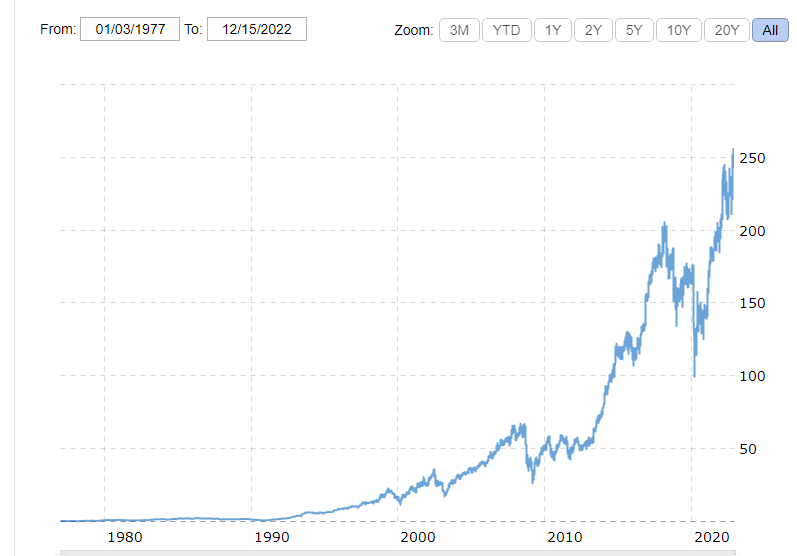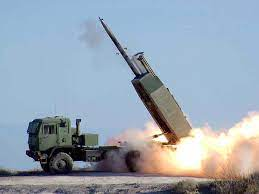Multiple Economic Fractures in Mordor
David Harvey and the Contradictions of Capitalism
Orientation
The golden age of left-wing economists
In part because the 1960s was still a period of capitalist abundance, there were few socialists in Yankeedom who pointed to the economic contradictions of capitalism as a motivator for the coming revolution. “Western Marxists” ignored the economy, imagining capitalism could go on forever. As first anarcho-communist and then as Situationists, the group I was in never talked about any economic laws that would drive the economy into a crisis. But a couple of my comrades, one from France, had been closely studying a book by Lyn Marcus (later his public name became Lyndon LaRouche) called Dialectical Economics. Here was a wake-up call for all of us to get back to economics, especially since by the late 1970s the days of economic abundance were over.
Throughout the next thirty years, good economic Marxists like Richard Wolff, David Harvey, Robert Brenner and John Bellamy Foster have carried the torch for political economy. However, it was not until The Great Recession of 2008 and the Occupy movement in 2011-2012 really brought economic crisis into the foreground of life in Mordor. Since then, more Marxist economists have emerged such as Michael Perelman, Michael Roberts, and Anwar Shaikh. They have all added depth and scope. Non-Marxist economics such as Michael Hudson, Steve Keen and Jack Rasmus have made acidic analyses of finance capital. The great value in all these economists is that they speak in natural language, not mathematical language. This makes it easier for the Yankee population to understand them.
Varieties of capitalist crises theory and their rivals
In his book The Long Depression Michael Roberts asks four key questions from which he derives eight possible answers about the nature of economic turmoil or even whether there is a crisis at all.
- Is capitalism subject to economic crisis?
Within the camp which says no, a second question is answered.
1b) Do periodic fluctuations need fixing?
If the answer is “yes” you are a Keynesian like Paul Krugman. If the answer is “no” you are a libertarian like Milton Friedman. For the libertarians capitalism only goes through “business cycles”.
Within the camp that says “yes”, that capitalism is subject to crisis, a second question is asked:
- Is the kernel of the crisis found in production?
If the answer is “no” you are an underconsumptionist like Marxists David Harvey or Rosa Luxemburg.
If the answer is “yes” about the kernel of the crisis found in production, there is another question:
2b) Are crises more than struggle over wages and profit shares?
If no, you are a profit-squeeze supporter. Economics associated with this are Baron and Sweezy and Richard Wolff.
If the answer to the kernel of the crisis is found in production is “yes”, a further question should be:
3a) Are crises integral to the accumulation crisis?
If the answer is “yes” you follow Marx’s argument about the tendency of the rate of profit to fall. This is advocated by Michael Roberts, Anwar Shaikh and Robert Brenner.
If the answer to the question is crisis integral to the accumulation process is “no” then a further question is asked.
4a) Does extra-consumption come from outside the system?
If the answer is “yes” you are a follower of Rosa Luxemburg or David Harvey and claim that capitalism has limited resources and needs imperialism to survive.
If the answer is “no” to the question then there is second question.
4b) Does extra consumption come from state intervention?
If the answer is “yes” you are a post Keynesian such as Steve Keen.
If the answer is “no” you are a Malthusian.
In this article I will be drawing from David Harvey’s book The Seventeen Contradictions and the End of Capitalism. I picked this book, not because I agree with Harvey’s theory of crisis, but because he lays out the contradictions so exhaustively. I am not a political economist by training but I have studied hard to understand him. What is most important for my readers to understand is that there are a great number of reasons that capitalism is in very, very, very serious trouble.
What is a contradiction?
Harvey says a contradiction is when two seemingly opposing forces are simultaneously present within a particular situation, an entity, a process or an event. A contradiction can be produced either by innovations, disasters or slow decline.
Contradiction 1 Exchange-value is More Important than Use Value Though Use-Value Matters More in Real Life
The use value of a house is contained in the cost of its production. This includes all the materials that went into building the house as well as the cost of labor to complete the house. The use value of the house is its protection from bad weather conditions, prowlers, a place of comfort, privacy and social reproduction, including sex and taking care of children. The use value of a commodity is relatively stable.
But the exchange value of housing is not fixed. It is interdependent on surrounding houses. Property values can go down on my house if my neighbors’ houses are not kept up, even if my house has been kept up. On the other hand, a house that is not kept up can sell for a high price if it is located in a gentrifying neighborhood. Harvey points out that there have been property market crashes in 1928, 1973, 1987 and 2008. The contradiction is that use-values are captive to exchange values and this constantly destabilizes the economy. Harvey says exchange value is always in the driver’s seat.
Contradiction 2 Money is Valued Above the Social Value of Labor
Harvey identifies four constructive functions that money provides:
- It is the means or medium of circulation. Before money, with barter exchange was dependent on both parties having goods the other wanted. Money overcomes the incongruity in immediacy of goods and services that limits direct barter.
- It provides a single measuring rod for economic values of all commodities.
- It provides a way to store value.
- It delays the need to buy a commodity immediately.
But there is a gap between money and the labor that ultimately produces it. Money hides the social labor that went into its material form. The problem is that money, which is supposed to be used to measure value, itself become a kind of commodity— that is money capital. Its use value is that it can be used to produce more value profit or surplus value. Its exchange value is, for example, an interest payment.
Commodity money such as gold and silver are rooted in tangible commodities with definite physical qualities like:
- It is relatively scarce.
- The supply is relatively inelastic so they maintain their relative value against all other commodities over time.
- These metals do not oxidant and deteriorate.
- The physical properties are known and their qualities can be assayed accurately so their measure can easily be figured out.
The problem is these commodity moneys are awkward to use on a daily basis of coin tokens. Bits of paper and then electronic moneys became much more practical in the exchange of goods. They are good at storing value but not so good in circulating commodities.
The problem is also the desire for finance capital as a means of social power becomes an end in itself. This distorts the concrete relation of the money that would be required simply to facilitate exchange. It also throws a monkey wrench into the supposed rationality of capitalist markets. Harvey writes that one of the most dangerous contradictions of capital is that of compounding growth so that with the abandonment of the metallic base, money could be printed infinitely by whoever was authorized to do so. This is exactly what is happening now with the Fed freely printing money without any foundation in gold or any real social wealth. Money out-of-control from material products is what leads to financial depression.
Contradiction 3 Private Property and the State Often have Conflicting Interests
Keeping refugees and immigrants out vs the need for cheap labor
The kind of rationality the state typically imposes is illustrated by its urban and regional planning practices.The job of the nation-state is to protect their borders from unwanted refugees or immigrants. On the other hand, capitalists need migrants to work under-the-table for dirt cheap wages. Capitalists indirectly fight with the state over the status of migrant workers.
Capitalists vs the matriarchal state
Secondly, the state can be divided into its matriarchal and patriarchal functions. Matriarchal functions include unemployment insurance, pensions, welfare, road construction and repair. The patriarchal state functions include the military, the police and prisons. Capitalists are against the matriarchal functions of the state because they cut into profits. However, capitalists are more than willing to invest in the police to protect them, prisons to house the unemployed or the military to take the natural resources of other countries.
Patriotism vs global trade
Even within the patriarchal state there are contradictions. On one hand the military is very patriotic and expect that people will buy Yankee cars. Harvey says the state is interested in the accumulation of wealth and power on a territorial basis. On the other hand, capitalists will seek to make a profit anywhere in the world and will import foreign cars and many other goods. As many of you know, capitalist oil businesses were making profits from Germany during the Nazi era and the Yankee state had to force them to leave.
Neocon war of all against all vs liberal laissez-faire trade policies
Lastly, the patriarchal state often opposes capitalists in its international ambitions. For example, neocon foreign policy war mongers like Victoria Nuland wants war with Russia and China. Liberal capitalists on the other hand, want to trade with China. Capital is not the only agent involved in the pursuit of technological advantages in civil society. The state apparatus looks for superior weaponry, surveillance and other methods for policing the population.
Contradiction 4 Capitalists Acting in Their Own Short-term Self-interest Undermine the Conditions of Their Own Reproduction
If the use value of a product and the price of the commodity were the same, there would be no room for capitalist profit. One the one hand, the common wealth created by social labor comes in a great variety of use values from the most basic knives and forks, to the food we eat, to the cars we drive. to the houses we live in and the clothes we wear. The capitalist private appropriation of common wealth along with the expropriation of social labor is legally sanction under normal conditions of trade. But there is a dark unseen and illegal side of the market which Harvey includes such as robbery, thievery, swindling, corruption, usury, predation, violence which goes unaccounted for. In addition, there is market cornering, price fixing and Ponzi schemes. All these activities weaken the socio-production process. Harvey writes:
It is stupid to seek to understand the world of capital without engaging with the drug cartels, traffickers in arms and the various mafias and other criminal forms of organization that play such a significant role in world trade. (53)
All this swindling and double-dealing is labor expended in counter-production which weakens the amount of energy left for production. This production includes the amount of wages paid and products consumed by workers to get to the next day.
Contradiction 5 The Class Struggle Over the Proportion of Wages given to Workers as Part of the Working Day
Harvey states that one of the most outstanding aspects of the capitalist system is that it does not appear to rely on cheating. For Marxists, labor has two aspects. On one hand, labor as human species is activity which distinguishes us from the rest of the animals and produces all real social wealth. One the other hand, there is labor power which is a commodity the capitalist rents for roughly half the working day. This “fairness” of the wage rests on the assumption that laborers have an individualized private property right over the labor they are capable of furnishing. But in reality, workers have a social property right over their labor because the cooperative social labor of all the workers in factories and offices produces all the wealth.
The commodification of labor power is the only way to solve a seemingly intractable contradiction within the circulation of capital. This contradiction is that in a fully functioning capitalist system, where coercion, cheating and robbery are supposedly ruled out, the exchanges should be based on the principle of equality – we exchange use values of products with each other and the value of those use values should be roughly the same. For all capitalists to realize a positive profit requires the existence of more value at the end of the day than there was at the beginning means an expansion of total output of social labor. Without that expansion there can be no capital. Zero growth defines a condition of crisis for capital. Here there is no room for profit. So where does the profit come from? As Harvey says, there must exist a commodity that has the capacity to create more value than it has itself. That commodity is labor power. And this is what capital relies upon for its own reproduction. It’s the exploitation of the extra five or six hours of the workers’ pay that is pocketed by capitalists. In reaction to workers joining in unions for higher wages and better working conditions capitalists will:
- lock workers out or close the businesses completely:
- refuse to invest or reinvest in workers or infrastructure;
- deliberately create unemployment and create an industrial reserve army; and
- move jobs to peripheral world countries for their cheap land or labor.
So there is a long-term, relentless struggle between capitalists and labor over the proportion of wages given to workers on a given day.
Capitalist contradictions about education
Another part of this conflict is over education. On one hand, capitalists want to keep workers as uneducated as possible so that they find out as little of the workings of capitalism as possible. But on the other hand, capitalists must make workers more creative in order to fix problems on the job. The problem for capitalists is they can’t control how the workers may use their creativity on the job to undermine capitalism one way or another.
Contradiction 6 The Contradiction Between Fixed and Circulating Capital
Capital investment takes three forms: as an investment in fixed capital – machinery, plants, land and investment and an investment in variable capital which is labor power. Labor power is remunerated afterproduction has occurred, whereas the means of production are usually paid for prior to production (fixed capital). But capital also invents the circulation of commodities. When the commodity is sold, then capital becomes liquid again. In the circulation of commodities, the speed of its circulation is also important. If one capitalist can circulate their commodities faster than another they have a certain competitive advantage. So they attempt to accelerate the turnover time of capital.
Limitations of making a profit on fixed capital
However, there are limits to the speed of circulation. To paraphrase Harvey, if I want to make steel, the iron ore and coal are still buried in the ground and it takes a lot of time to dig them out. There are not enough workers close by who are willing to sell their labor power. I need to build a blast furnace and that takes time. There are physical barriers to reducing this turn-around time to zero. Workers, furthermore, are not automatons. They may lay down their tools or slow down their labor process. (73-74)
Once the steel is finished it has to be sold. The commodity can sit on the market for some time before the buyer shows up. The capitalist has a vested interest in securing and accelerating the turnover time of consumption. One of the ways is to produce steel that rusts so fast it needs rapid replacement: planned obsolescence (73-74)
These problems center on the category of long-term investments in fixed capital.
In order for capital to circulate freely in space and time, physical infrastructures and built environments must be created that are fixed in space – anchored on the land in the form of roads, railways, communication towers and fiber-optics plants, airports and harbors, factory buildings offices, houses, schools, hospitals. More mobile forms of fixed capital are ships, trucks, planes and railway engines. (75)
Capital in danger of social sclerosis
The part which is moveable capital cannot be replaced during the item’s lifetime without loss of value. As time goes by the sheer mass of this long-lived and often physically immobile capital for both production and consumption increaserelative to capital that is continuously flowing. Whole sites are abandoned and wasted as in the rust belts of Mordor. On one hand, in order for capital to circulate freely in space and time, physical infrastructures and built environments must be created that are fixed in space. Yet capital has to periodically break out of the constraints imposed by the world it has constructed. As Harvey says, it is always in mortal danger of becoming sclerotic. Why?
Capital is forever in danger of becoming more sclerotic over time because of the increasing amount of fixed capital required. Fixed and circulating capital are in contradiction with each other but neither can exist without the other. The flow of that part of capital that facilitates circulation has to be slowed down. But the value of immobile fixed capital (like the container port terminal) can be realized only through its use. It is generally much slower.
From physical goods to spectacles
One solution for capitalists is to sell events rather than physical commodities. Harvey says there is a huge difference between, for example, the live transmission of a World Cup football match and lugging around bottled water, steel girders, furniture or perishable items like soft fruit, hot pork pies, milk and bread. Commodities are variably mobile depending upon their qualities and transportability. Production, with some exceptions, like transportation itself is the least mobile form of capital. It is usually locked down in place for a time. In shipbuilding it is considerable.
Contradiction 7 The Contradictory Nature of Low Wages vs Capitalist Realization
The goal of capitalism is to sell as many products as it can at the cheapest possible price. But in the process of making a profit the capitalist must:
- exploit labor power (surplus value) so it can raise the price of a commodity;
- realize the sale of the product in the market – which is far from easy
The problem for capitalists is that if wages are kept low the aggregate demand of laborers won’t be enough to buy the products off the shelf. So if the cost of social reproducing of the laborers is being forced back into the household, then those laborers will be less likely to buy goods and services off the market. Lack of aggregate effective demand creates a serious barrier to the continuity of capital accumulation. Working class consumer power is a significant component of that effective demand. Yet if the capitalist insists on paying minimum wage how can the workers buy the products?
Between 1945 and the mid-1970s, the problem for capitalist was in the production of enough surplus valuebecause of unions were strong and wages high. When unions became weaker, wages dropped beginning in the 1970s. Then the problem for capitalists was was not in the achievement of extracting surplus value but in cultivating conditions for its realization since workers had less money to buy commodities. This is why in the early 1970s capitalists began issuing credit cards to workers in order for capitalist profits to be realized.
Contradiction 8 Contradiction and Alienation of Labor
Harvey says there is an important distinction between the technical and social division of labor. By technical he means a separate task within a complex series of operations, that anyone can do. By social he means the specialized task that only a person with adequate training or social standing can do, like a doctor, or an architect. In the technological division labor, the unity of mental and manual aspects of laboring was broken.
The meaning of the term “alienation” has psychological and sociological components. As a passive psychological term, it means to become isolated from connection to others whether at work or in leisure. As an active psychological state, it means being angry and hostile or feeling oppressed, deprived or disposed of. The person acts out that anger, lashing out without any clear definition. Teenage rebellion movies of years ago, The Wild One or Rebel Without a Cause, are examples.
As beautifully laid out by Bertell Ollman, sociologically alienation means the worker is estranged from his or her product of labor as well as the process of work. He/she is also alienated from other workers, from nature and from their own creativity. As Marx said it is only outside of work that the worker has the possibility to achieve any personal fulfillment. Uneven geographical development in the divisions of labor and the parallel increase in social inequality in life choices, are exacerbating that sense of alienation. This creates a danger for capitalists in the form of labor unions, strikes, labor parties and agitation for socialism. On one hand, the accumulation of capital requires squeezing the life out of the worker. On the other hand, this repression creates militancy on the part of workers.
Contradiction 9 Automation Might Shrink the Ratio of Necessity and Freedom vs Automation as the Driver od Unemployment
One of the mythological stories told by capitalists is that technological innovation would lead to more leisure time for workers. Well, since about 1970 in Yankeedom, we have seen an increase in the amount of full-time work from 40 hours to at least 50 hours per week. This is because capitalist motivation is not to create more leisure for workers, but to replace workers, especially militant workers, with machines.
On the other hand, automation and artificial intelligence now provide us with abundant means to achieve the Marxian dream of freedom beyond the realm of necessity. In other words, the population could have more leisure time to use their creativity for new inventions, new arts and new sciences. Full advantage could be taken of automation and artificial intelligence. But for the capitalists the more time that has been released from production, the more imperative it has become (for the capitalist) for the workers to absorb their leisure time in consumption. It has no room for authentically free time which neither produces nor consumes commercial wealth.
Contradiction 10 Technological Innovation vs Monopoly Capitalism
From competition to monopoly
According to Harvey, the development of technology first became a focus for capitalists in the second half of the 19thcentury with the rise of the machine tool industry. Harnessing energy like the steam engine was applied to multiple industries. The classic Marxist argument is that through capitalist competition, the productive forces (technology) increase and outdistance the capitalist capacity to use this productive power. This overabundance of products creates the conditions for socialism. But what Marx didn’t anticipate is that capital demonstrates a trend towards monopoly rather than competition. This is a less favorable environment for innovation.
Wealth of Nations is the founding myth of liberal economic theory. Capital is imagined as constructed by a plethora of molecular and competitive collisions of individual capitalists moving freely and searching for profitable opportunities within a chaotic sea of economic activity. But in fact by the end of the 19th century, corporations has overwhelmed Adam Smith’s competitive invisible hand. All this is news to market fundamentalist economists. Right-wing market libertarians present monopolies as an exception to the rule, rather than the predominant way of life under capitalism. Google, Microsoft, Facebook, Amazon, Walmart and Apple are all examples of oligarchies tending towards monopolies. The tendencies in many sectors of the economy – pharmaceuticals, oil, airlines, agribusiness, banking software, media and social media – suggest strong tendencies towards oligopoly, if not monopoly. In fact, says Harvey, most capitalists, if given the choice prefer to be monopolists rather than competitors
Lenin saw capital moving into a new phase of monopoly power associated with imperialism at the turn of the 20th century when the big industrial cartels combined with finance capital to dominate the leading national economies. This view re-emerged in the 1960’s with Paul Baran and Paul Sweezy’s book Monopoly Capitalism. The crisis of the 1970s – stagflation and inflation – was widely interpreted by Marxists as a typical crisis of monopoly capital.
Why monopolies put the brakes on innovation
Capitalism today limits the rate of technological innovation because:
- The organization of cooperation and divisions of labor must be made in ways to maximize efficiency, profitability and accumulation. This means that innovations that will not be very profitable, such as long-lasting technologies, will be repressed.
- The capitalist needs to facilitate the acceleration of capital circulation in all its phases, along with the need to annihilate space through time. What I mean is increasing speed of transport and communication reduces the friction and barrier of geographical distance. This requires minimizing capitalist occupation of space.
- Capitalist must shorten the turnover time by shortening the lifetime of consumer products (planned obsolesce).
- Capitalist can shorten the lifetime of products’ shift from the production of things that last to the production of spectacles which are ephemeral and contain faster turn-around time.
- Capitalists technologies of knowledge are used to identify consumer preferences.
- The speeding up and turnover time by the use of the technologies of finance. Beginning with invention checks and credit cards, the goal is faster turn-around time. The rise of cyber moneys, like bitcoin, is just the beginning of an inexorable descent of the monetary system into chaos.
- Capitalists must not only speed up the realization and consumption process, but they must develop technologies that speed up the workers. This includes time motion studies, the Hawthorn experiments, and surveillance. This attempted control encompasses not only physical efficiency but also the rise of robotization. As Harvey writes, robots do not complain, answer back, sue, get sick, go slow, lose concentration, go on strike, demand more wages, want tea breaks or refuse to show up.
All this means is that that the because the capitalist must speed up the production and consumption process, it is far from the ideal conditions of innovation. Scientific innovators are in no hurry and want their products to last. The contradiction is that capitalists want scientific innovation to create ever new processes and products. Yet in their efforts to shorten the turnover time of products, they undermine the innovative processes themselves. They will not be able to innovate at the pace that would develop the productive forces and would stagnate and shrink the rate of profit.
Contradiction 11 Globalization of Capital: Promises and Perils
The division of labor within capitalism is now taking place at a world-wide scale. Harvey writes that what is now in place is radically different from anything that existed prior to 1850.
There are three sectional classifications of the division of labor between:
- primary – agriculture, forestry, fishing and mining;
- secondary – industry and manufacturing; and
- tertiary – services, finance, insurance and real estate sectors.
On one hand a world market in grains can forestall a local crop failure. At its best all capitalist countries have the technology to support each other during famines, extreme weather, floods, earthquakes and droughts. The fact that capitalist countries limit these interventions to countries that are their allies does not limit their potential to serve the whole world.
One the other hand, as Harvey points out today the clothing factories in Bangladesh, the electronics factories of southern China, the maquiladora factories strung along the Mexican border or the chemical complexes in Indonesia are all interdependent. Small disruptions in a supply chain can have very large consequences. A strike in a key car parts factory in one region of the world can bring the whole production system to a halt everywhere. Supply chain blockages thanks to Covid result in delays in both the process of production and the delays on the product.
Contradiction 12 Uneven Geographical Developments: Super-Concentrations of Production and Wastelands
The capitalist division of labor has reached a world scale and this results in uneven pockets of production with high concentration of work in some areas and wastelands in other areas. Time is money for capitalism. Traversing space takes both time and money. As much as possible the near elimination of transport costs and times is a factor in location decision making. This permits capitalists to explore different profit opportunities in widely disparate places.
Harvey writes that what arises is “agglomeration” economies where many different capitals cluster together. For example, car parts and tire industries locate close to car plants. Different firms and industries can share facilities and access labor skills, information and infrastructures. However other regions may become wastelands increasingly bereft of activities. They get caught in a downward spiral of depression and decay. The result is uneven regional concentrations of wealth, power and influence. Affections and loyalties to particular places and cultural forms are destroyed and treated as anachronisms. Large blotches of the world become wastelands where nothing is grown and people can no longer live.
Capital never has to address its systemic failings because it moves them around geographically. Since myopic capitalists treat these wastelands as “externalities” the problem grows worse. The heads of nation-states are enslaved to capitalists and are in no position to address the geographical mess capitalists have created. There are, however, limits to continuous centralization through agglomeration. It results in overcrowding and rising pollution. In addition, labor may become better organized in its struggles against exploitation because of its regional concentration.
Contradiction 13 Finance Capital vs the Physical Economy
There are two ways in which capitalist crises might be produced:
1) chronic inequalities produce imbalances between production and realization; and
2) financialization of profit means capitalists will not invest in their own infrastructure.
In the case of financialization, what makes the current phase special is the phenomenal acceleration in the speed of circulation of finance capital and the reduction in financial transaction costs. If all capitalists seek to live off finance, insurance and real estate interests and are just speculating in asset value or living off capital gains the gap between finance capital and the real physical economy grows.
The problem of compound interest
Harvey points out that – Michael Hudson in the Bubble and Beyond is one of the only political economists who takes the issue of compound growth seriously. He says that most people do not understand very well the mathematics of compound interest.
Nor do they understand the phenomenon of compounding growth and the potential dangers it can pose. Harvey writes that compound interest curve rises very slowly for quite a while and then starts to accelerate and by the end the curve becomes a singularity as it sails off into infinity. Harvey goes into much more detail on pages 223-228 of his book.
There is one form that capital takes which permits accumulation without limit and that is the financial form. Today finance capital is now unchained from any physical limitations. In Mordor today the Fed issues fiat moneys that can be created without limit. Adding a few zeros to the quantity of money in the circulation is no problem for them. The danger is that the result will be a crisis of inflation. The contradiction is in disparities between accumulation process that is necessarily exponential and the conditions that might limit the capacity of exponential growth. These conditions are the requirements to invest in the physical aspects of the economy such as buildings, harnessing of energy and infrastructure.
Fictious capital instruments
Besides the printing of fiat money another financial instrument in the purchase of assets includes debt claims. Harvey writes an asset is simply a capitalized property title. This was paralleled by the creation of wholly new assets markets within the financial system itself such as currency futures, credit default swaps, and CDOs.
This was fictitious capital feeding off and generating even more fictitious capital.
Harvey writes there is a labyrinth of countervailing claims that were almost impossible to value except by way of some mix of future expectation, beliefs and outright crazy short-term betting in unregulated markets with no prospect of any long-term payoff.
Contradiction 14 Capital’s Relation to Nature
Liberal environmental politics has preferred to ignore entirely the fact that it is capitalism that produced the current ecological crisis. Harvey writes that they nibble away at issues on the periphery of the capitalist system while they never reach the core of the system that is producing the problem. “Deep ecologists” wrongly call Marxism “Promethean” which has a disregard for nature and claims that only human history matters. But John Bellamy Foster has dedicated the better part of his life arguing for the belief that Marx was ecologically sensitive and had a concept of capitalism as creating a “metabolic” rift with nature.
In addition, by training David Harvey is a geographer and has written books on a Marxist criticism of what capitalism has done to the natural world. The change in climate and the frequency of severe weather events is increasing. Catastrophic local events can be readily accommodated by capital since a predatory disaster capitalism is ready to go. But pollution problems do not get solved, only moved around in uneven benefits and losses. The capitalist system is not prepared for the slow, cancerous degradations. Harvey says that whereas the problems of in past were typically localized, they have now become more regionalized such as acid deposition, low level of ozone concentration, stratospheric ozone holes, habitat destruction, species extinction and loss of biodiversity.
Conclusion
Harvey points out that this one-at-a-time presentation of capitalist contradictions does not address that all these contradictions are feeding into each other forming an organic whole. Do capitalists understand these contradictions? For the most part, no. Most are enthralled with market fundamentalist theories. A minority have read Marx. But even so, their short-term material interests as capitalists blocks them from understanding the full ramifications of their system. So capitalists as a class do not understand their system. They blithely roll along accumulating finance capital and pay no attention to the fourteen fractures I’ve identified. What problems occur are dismissed as “business cycles”. As the fractures deepen we can count on capitalists to ramp up their ideology and distract us with more extreme forms entertainment, including football games, escapist movies and increasing violence in movies coupled with special effects.



















